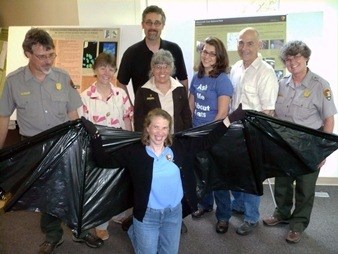
Public Awareness and Research Conference held on June 21, 2014
Bats comprise more than 200 species that span nearly the entire world, providing vital ecological functions of insect control, flower pollination, and seed dispersal.Various bat species eat very different foods, including nectar, fruit, and insects as well as frogs, lizards and even blood. Bats have unique adaptations compared to other mammals.These include flight, echolocation, and a unique sense of smell.
Bats in North America, which feed primarily on insects, are under threat by the spread of a fungal disease called white-nose syndrome (WNS) caused by Geomyces destructans (G. destructans). The fungus is currently affecting hibernating bat species in nearly half of the United States and parts of Canada. It continues to spread across the continent. Little brown bats (in photo), once a common bat in several areas, are sustaining the largest number of deaths. Caves infected with WNS are displaying 90-100% bat mortality –wiping out most of the cave bat populations. The Bats Alive! Conference included 10 bat researchers and educators from Indiana State University, Purdue University, Western Kentucky University, Mammoth Cave National Park, Ravenswood Media, and The Organization for Bat Conservation, who presented their projects on bat biology and conservation. Conference Agenda Conference Presentations
Last updated: September 19, 2019
